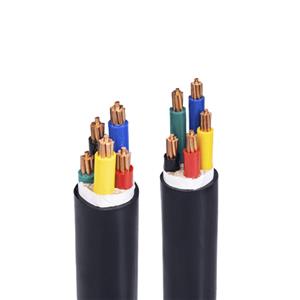Have you ever learned about RV wires?
With the improvement of living standards, people's requirements for home environment are getting higher and higher. In the process of home decoration, RV wire is a common wire, and its safety and aesthetics cannot be ignored. Below, cable manufacturers will introduce in detail how to create a warm and comfortable home environment based on RV wire.
What is RV wire? RV wire, also known as cable branch wire, is a wire used in home electrical system. It is mainly used to provide power from the main power supply (usually the distribution box) to various electrical equipment (such as sockets, lamps, air conditioners, etc.). RV wire is characterized by flatness, width and thickness, and a layer of insulating material wrapped on the surface to protect the internal conductor and insulation layer.
What are the characteristics of RV wire? Because RV wire has to carry a large current, its cross-sectional area is large and the surface is flat and thick, which is conducive to heat dissipation and resistance reduction. RV wire is usually composed of multiple wires, so that it can meet the power requirements of different electrical equipment. The outer insulation material of RV wire can effectively prevent the internal conductor of the wire from contacting the outside world, and the insulation performance is good, which can ensure the safety of electricity use.

How to select and install RV wires? When we choose RV wires, we should determine the specifications of the required wires according to the actual needs of the home electrical system. Each socket, lamp, air conditioner and other equipment needs to be connected to an RV wires separately. At this time, we need to choose the appropriate specifications of the RV wires according to the power requirements of the equipment, and also pay attention to whether the rated voltage and rated current of the RV wire meet the requirements of the home electrical system.
When installing the RV wire, you should also pay attention to the following points. First, the direction of the wire. The RV wire should be routed along the wall or ceiling, and try to avoid exposing the wire to the outside, so as not to affect the appearance and cause safety hazards. The wire direction should be as short as possible to reduce the loss of the wire. In terms of joint processing, when the RV wire is connected to multiple electrical equipment, a joint box should be set at an appropriate location to facilitate the maintenance and replacement of the wire. The location of the joint box should also be selected in a place that is easy to operate and does not affect the appearance. Pay attention to the use of protective tubes for laying. When the RV wire passes through walls, floors and other parts, it should be laid in a protective tube to prevent the wires from being worn and damaged. The material of the protective tube should match the wire to ensure a good grounding effect.
Finally, the RV wire should be maintained and repaired. In order to ensure the safe and stable operation of the home electrical system, we should regularly check the RV wire, including checking whether the line is damaged, whether the joints are loose, whether the insulation layer is cracked, etc. Once a problem is found, it should be repaired or replaced in time. Pay attention to cleaning and maintenance during normal use. Although the surface of the RV wire is wrapped with a layer of insulating material, dust and dirt will still adhere to the surface after long-term use. In order to ensure the safety performance and aesthetics of the wire, the RV wire should be cleaned and maintained regularly. When cleaning, be careful not to use a wet cloth or corrosive chemicals to avoid damaging the insulation layer on the surface of the wire. The service life of the RV wire is generally about 15-20 years, depending on the use environment and maintenance of the wire. When the RV wire is found to be aging, deformed, etc., it should be replaced in time to ensure the safe and stable operation of the home electrical system.

RV wire is an important part of the home improvement process that cannot be ignored. Only by correct selection, reasonable installation, regular inspection and maintenance can the safe and stable operation of the home electrical system be ensured, creating a warm and comfortable home environment for users.




